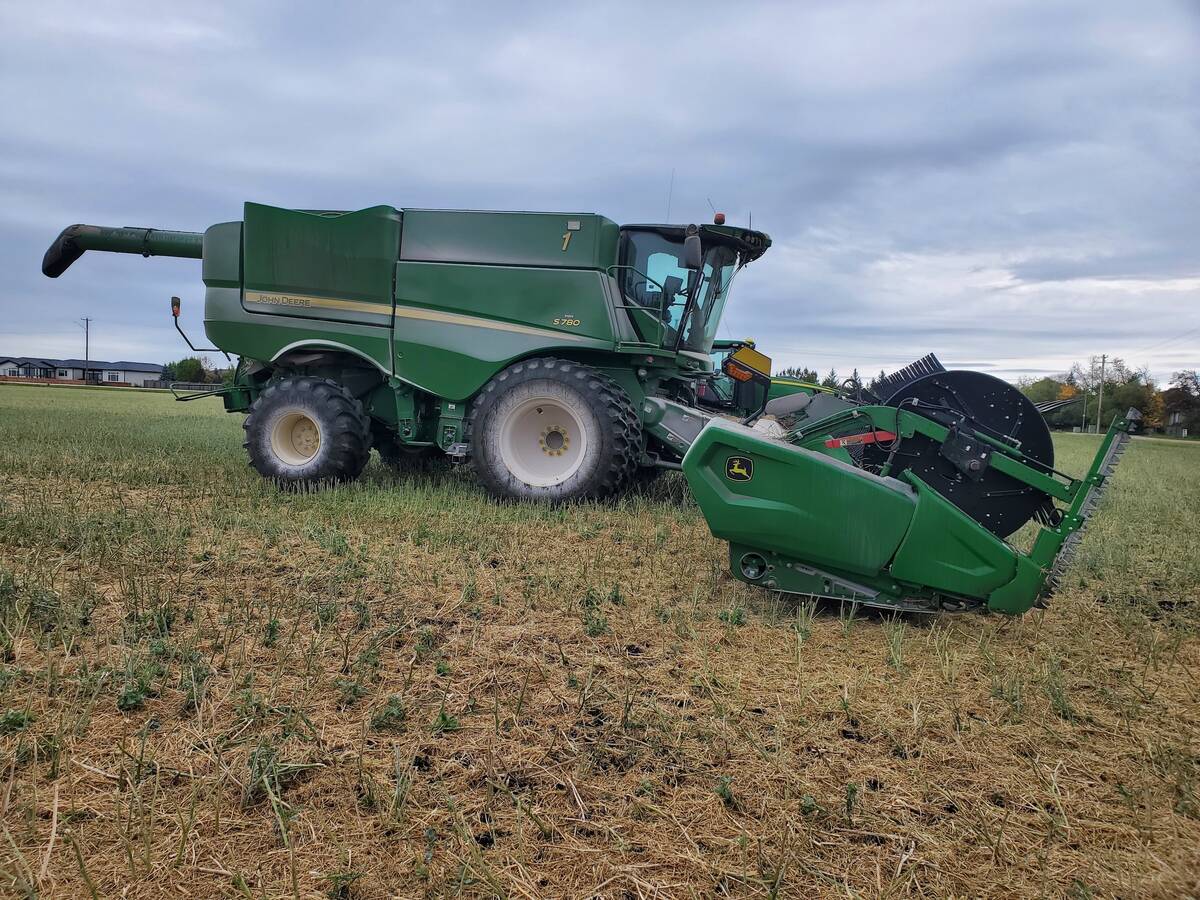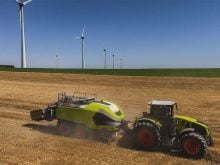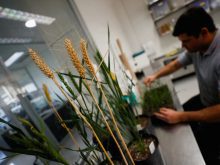Cloned livestock in Canada are limited mainly to research animals, but
techniques are improving and government and industry are making plans
for the arrival of clones in commercial agriculture.
Canada’s first clones were developed about 15 years ago with work by
several universities and an Alberta company.
They produced cloned cattle from embryos, without benefit of sexing or
other selection. Cloning techniques improved over time and helped to
advance embryo transfer techniques but it was still expensive and had
Read Also

Powdery mildew can be combine fire risk
Dust from powdery mildew can cause fires in combines.
limited relevance to commercial livestock production.
Governments of the day limited their interest to establishing and
enforcing standards of animal welfare and to ensuring that provisions
of the Canadian Environmental Protection Act were being upheld in
transgenic reproduction.
The Canadian Environmental Protection Act is the only piece of
legislation in force today that applies to the cloning of livestock in
Canada.
The act applies only to transgenic animals or animals that have been
genetically altered by the removal or the addition of novel genes in
the reproduction process.
In nuclear transfer cloning, the genetic material of the donor is not
altered.
The Canadian Food Inspection Agency, which monitors food safety in
Canada, applies the same standards and testing procedures to cloned
animals and those that are produced sexually.
Unless an animal is genetically modified, little or no inspection takes
place beyond what would occur for any slaughtered livestock or
livestock products.
United States government agencies have asked farmers, researchers and
the livestock industry to keep cloned animals and the food they produce
out of the commercial food market until the government enacts
legislation to deal with the issue. But there is no legal obligation
for individuals of companies to keep food from cloned animals out of
the system.
Canadian government officials say there are no regulations governing
the use of cloned livestock in this country, but three federal
departments, environment, agriculture and health, have formed a
committee to study
the issue and to make
recommendations for future legislation.
Jim Louter of Environment Canada is one of the people analyzing the
subject for the federal government.
“The issue of regulation with regard to cloning is so new that we are
still working out what should be done,” said Louter.
“The rest of the world is doing the same thing, we aren’t behind ….
Cloning and transgenics are different issues. How we approach them
needs to reflect that, but there are so many aspects that need to be
studied that it takes time to assess them all properly.”
Margaret Sommerville, a professor of law and ethics at McGill
University, said Ottawa must balance two sometimes-competing
philosophies when it comes to creating legislation .
“Good governance demands that legislators take their time to analyze
all of the issues that arise from cloning, but they are under pressure
from industry to react quickly …,” Sommerville said.
“They are supposed to act to protect the public trust, but voters are
electing them to lower taxes and improve the business economy.
“There are also questions about animal rights to reproduction that need
to be examined.”
Dave Trus of Agriculture Canada advises legislators on cloning issues.
He suggested the broad scope of the issue makes it challenging to
develop legislation.
“Cloning is reproduction. Transgenic modification is something else.
“Ours is just one area. Other departments have their own issues. It’s a
broad topic,” he said.
Martin Rice of the Canadian Pork Council said his association doesn’t
“view cloning as genetic manipulation.
“As long as the animal isn’t changed, it poses no threat to the food
chain or to breeding lines …. If an animal is genetically modified,
then that is something else entirely and those would never enter the
Canadian food chain (without regulation).”
Rice and Glenn Cherry of Holstein Canada agreed that the practical
application of cloning is probably too expensive to be used in
commercial production.
But Cherry said he and other livestock associations are looking forward
to Ottawa developing clear rules on cloning and the use of food from
cloned animals.
The committee in Ottawa is working with American government agencies
and monitoring their progress toward developing legislation.
The U.S. Food and Drug Administration has asked the American National
Academy of Sciences, or NAS, to produce a report on cloning and
transgenics in all animals, excluding humans.
Ron Gillespie is one of those hoping the legislation comes “sooner,
rather than later.”
“We need to know what the government expects,” said Gillespie, who
works for Cyagra, the cloning division of Advanced Cell Technologies of
Worcester, Massachusetts, and one of the pioneers in nuclear transfer
livestock cloning.
“We hope that the NAS will look at cloning as just another method of
reproduction and that the government will let our industry move ahead.”
After several delays, the NAS report is expected this month.
The U.S. Food and Drug Administration has indicated in policy papers
that it intends to rule this year on whether cloned animals should be
treated like genetically engineered livestock, which it regulates,
or like animals bred through in-vitro fertilization, which it does not.
Canadian officials said they may incorporate some the NAS’s findings
into their own policy.
Ruben Mapletoft, a reproduction researcher at the University of
Saskatchewan’s Western College of Veterinary Medicine, served on the
Canadian Animal Care Council 15 years ago when embryo cloning was first
being done in Alberta. He said the issues outlined then are similar to
those being discussed today.
“Cloning is a reproductive technology and that is where any debate
needs to be centred,” Mapletoft said.
“Like any reproduction, we need procedures and methods of tracing and
tracking the animals. We need to know that animals are treated
appropriately. That is where the regulations come in,” he said.
















